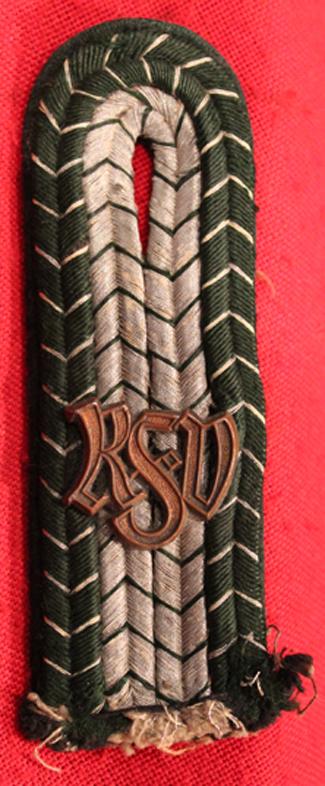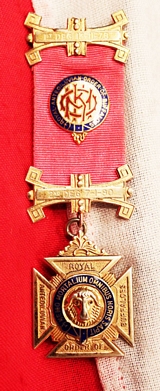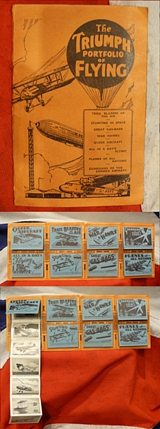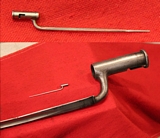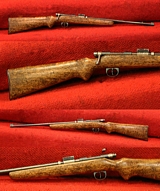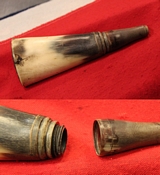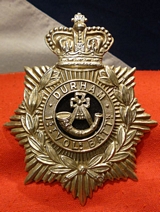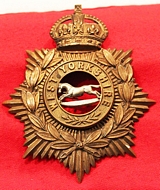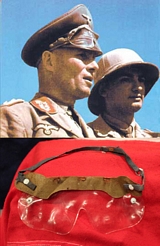WW2 Third Reich Customs Officials Shoulder Board
A WW2 Third Reich Customs (Zoll) Official epaulette. The Green & silver epaulette with silver and green inner sections, on a green wool field. Metal 'RZD' (Reichszolldienst) monogram .Zollgrenzschutz (ZGS) (lit. 'Customs Border Guards') was an organization under the German Finance Ministry from 1937 to 1945. It was charged with guarding Germany's borders, acting as a combination Border Patrol and Customs & Immigration service.
In Nazi Germany it was formed in 1937 by Fritz Reinhardt, a State Secretary of the Finance Ministry. It came to comprise about 50,000 officials. The Border Police (Grenzpolizei), which had the tasks of passport and border control, was different from the Customs Border Guards (Zollgrenzschutz).
Heinrich Himmler tried to bring the Zollgrenzschutz under the control of the Schutzstaffel (SS), which was unsuccessful at first. During the war, the units were used in occupied territories outside of Germany. A significant portion of younger officials were recruited to the Wehrmacht, leaving the Zollgrenzschutz with older men. After the 20 July 1944 assassination attempt on Hitler, the units were taken out of the control of the Finance Ministry and placed under Amt IV (Gestapo) of the Reich Security Main Office (RSHA)
Photo in the gallery of Oberzollrat of the Zollgrenzschutz [far left] with Field Marshal Ernst Rommel [middle] read more
45.00 GBP
A Superb, Solid Silver Gilt and Enamel Royal Antediluvian Order Of Buffaloes Order Of Merit
Hallmarked silver with fine mint enamelling and silk ribbon, known within the order as a jewel. The Royal Antediluvian Order of Buffaloes (RAOB) was one of the largest fraternal organisations in the United Kingdom. The order started in 1822 and is known as the Buffs to members.
The RAOB organisation aids members, their families, dependents of former members and other charitable organisations. The order has a Rule Book, Manual of Instruction and Ceremony Lectures issued and revised by the Grand Lodge of England based at Harrogate in England. The 'lodge' description for branch organisation and headquarters was adopted in imitation of Freemasonry but RAOB is completely open in its objectives, activities and ritual. The RAOB was begun in the Harp Tavern (opposite the Drury Lane Theatre) by the artist Joseph Lisle and comedian William Sinnett along with other stage hands and theatre technicians in August 1822. It drew its then name of The Buffaloes from a popular song of the time We?ll chase the Buffalo. This first meeting is historically the Phoenix Lodge No.1. As members toured the country with various shows lodges were opened in other towns.
The Order's motto "No Man Is At All Times Wise" (Latin: Nemo Mortalium Omnibus Horis Sapit) and has the maxim of "Justice, Truth and Philanthropy". read more
95.00 GBP
Rare, Complete and Original, Triumph Magazine Portfolio of Flying
Original 1930's issue. Softcover, in exceellent condition, about 3.5 x 5.25 inches but folds out to about 14 x 5.25 inches, folds out to 4 panels with each panel have two small booklets (about 3 x 2 inches each), each booklet contains 7 small b&w photos or illustrations, the booklets are as follows: Queer Aircraft ( glider plane; Westland-Hill Pterodactyl 3 seater; Northrop Beta monoplane; Focke Wulf; Cierva autogiro; seaplane; mono-spar 3 seater ), ---All in a Days Flying ( iceberg patrol; aerial mountie gets his man; stemming the stampede; answering an SOS; Air Mail; the flying shop (delivering goods to natives); rescuing stranded mountaineers ) ---Trail Blazers of the Air ( Charles Lindbergh; Richard Byrd; J A Mollison; Charles Kingsford-Smith; Bert Hinkler; Amy Johnson; Alan Cobham ) ---Stunting in Space ( wing walkers, acrobats, dare devils; etc ) ---War Hawks ( a zeppelin hunter; machine gunning the artillery; dog fight; British blimp bombs a submarine; destroying an observation balloon; etc) ---Great Gas Bags ( the Graf zeppelin; Picard's Stratosphere balloon; USS Akron; jumping balloon; Spanish observation balloon; American airship moored; a plane carrying airship ) ----Guardians of the Empire's Airways ( fighter taking off from aircraft carrier Furious; 20 ton RAF monoplane; Blackburn Napier torpedo plane; desert patrol; loading a bomber; getting an RAF searchlight ready; catapulting a plane from a submarine ) ---Planes of all Nations ( Belgian fighter; british 38 seaterand Puss Moth; French Paris to London liner; Italian S.55 flying boat; Junker; Swiss Dornier Do-X; American military transport plane ), read more
140.00 GBP
Very Special Offer!! Many Have Been Reserved Just 5 Remaining As Not Yet Reserved A Fabulous, Original Set of Antique MK II Zulu War &1880's Vintage Martini Henry Rifles
Special one off offer items. We are sending them individually to be conserved and stock restored but as requested and as required. The stocks and all steel parts are very good but some stock cracking needs attention etc. our artisan can attend to that near invisibly. All the rifles are with original Victorian era leather slings.
These the very types of MK IIs as were used by the 24th Foot at Ishandwhana and Rorkes Drift. All of them are original ordnance contract examples, made either by Enfield, Birmingham Small Arms or London Small Arms, all with VR Crown mark, all originally line regiment issue. All sold on an individual basis . As they are incredibly collectible it is most unlikely they will remain available for long.
These rifles are truly exceptional examples, maker marked, and in very good operational order indeed with an excellent action, and clearly combat used. All their cleaning rods are present but usually no longer removable.
The Martini Henry, .450 577 rifle was most famous British Infantry breech loading rifle of the 19th century. All of these rifles are just as were used in the film ZULU, and the exact type as was used during the 1879 Zulu War, all very nice examples.
The Martini-Henry was a breech-loading lever-actuated rifle adopted by the British, combining an action worked on by Friedrich von Martini (based on the Peabody rifle developed by Henry Peabody), with the rifled barrel designed by Scotsman, Alexander Henry. It first entered service in 1871 replacing the Snider-Enfield, and variants were used throughout the British Empire for 30 years. It was the first British service rifle that was a true breech-loading rifle using metallic cartridges.
During the Martini-Henry period in service, the British army were involved in a large number of colonial wars, most notably the Anglo-Zulu War in 1879. The Martini Henry, 450-577, Short Lever, [MK I converted] MK II or the regular MK II rifle was the type used by the company of the 2nd Battalion, 24th Regiment of Foot present at Rorke's Drift during the eponymous battle. The MK I originally had a small design fault in that the actions hinge pin was initially made of brass, which was too soft for continual use. The rare and early MKI's were thus converted by removing this pin, replacing it with a steel pin, and then redesignated the MKII. The later dated 1880's examples we have were used throughout the British empire. This fabulous set, will now be sold individually, and were used for lecture purposes for almost 15 years at various military bases around the country
As with all our original antique arms, no licence is required to own, purchase or to collect anything of that description we sell. They, and all of these rifles, are entirely unrestricted to own, collect, and display just as they are, however, we only permitted to sell to those who are over 18 of age [with suitable I.d.] read more
Price
on
Request
A Miniature Waterloo Period 'Brown Bess' Musket Bayonet
Original hand engineered miniature, made post war by renown miniaturist engineer Ronald Platt. Photographed alongside the original bayonet to show perspective. the Third or India Pattern became the standard British musket in use throughout the remainder of French Revolutionary and Napoleonic Wars and was used in almost every theatre in which the British were present. It was the musket that the British soldier carried during the Peninsular War and the Hundred Days campaign including both the battles of Quatre Bras and Waterloo. It was also used in the War of 1812 in North America. read more
50.00 GBP
An Early Fine Miniature Single Shot Bolt Action Rifle
Showing all the minute detail of the original bolt action rifle. European armies continued to develop bolt-action rifles through the latter half of the nineteenth century, first adopting tubular magazines as on the Kropatschek rifle and the Lebel rifle, a magazine system pioneered by the Winchester rifle of 1866. The first bolt-action repeating rifle was the Vetterli rifle of 1867 and the first bolt-action repeating rifle to use centerfire cartridges was the weapon designed by the Viennese gunsmith Ferdinand Fruwirth in 1871. Ultimately, the military turned to bolt-action rifles using a box magazine; the first of its kind was the M1885 Remington Lee, but the first to be generally adopted was the British 1888 Lee-Metford. World War I marked the height of the bolt-action rifle's use, with all of the nations in that war fielding troops armed with various bolt-action designs. Probably a Colt or Remington pattern. 6 inches long Non working original hand engineered miniature, made post war by renown miniaturist engineer Ronald Platt. read more
275.00 GBP
A Georgian 18th century Carved Horn Primer or Pistol Flask
made in the 18th and used into the early 19th century. With powder measure screw on cap. Cow horn with wooden base plate.
Firearms became more and more sophisticated during the 16th-century but still required a number of accessories to load and operate them. The main charge, placed in the barrel with the shot, was carried in the powder flask. Smaller priming flasks contained fine-grain powder for priming the pans of wheel-lock firearms. Flasks were attached to a bandolier, a type of sling worn over the shoulder or around the waist, from which hung the various accessories required for a weapon including spanners for the mechanism, measured charges, powder flasks and priming flasks. read more
220.00 GBP
A Victorian Durham Light Infantry Helmet Plate Ist Volunteer Battalion
In white metal with black centre. The 1st Durham Rifle Volunteer Corps was formed at Stockton-on-Tees in 1860, and in 1880 was amalgamated with other Durham corps, from Darlington, Castle Eden and Middlesbrough, to form a battalion of eight companies.
The 1st Durhams later became the 1st Volunteer Battalion of the Durham Light Infantry and as such gained the battle honour `South Africa 1900-02' for the services of its members during the Boer War. read more
175.00 GBP
An Edwardian West Yorkshire Regt. Large Helmet Plate
World War I saw numerous battalions of The Prince of Wales's Own (West Yorkshire Regiment) serving at Neuve-Chappelle, Loos, the Somme, Passchendaele, Ypres, Marne, Arras, Cambrai and Gallipoli. At its peak The West Yorkshire Regiment numbered 37 battalions, 66 Battle Honours were bestowed and four Victoria Crosses were awarded.
The four TF battalions formed the West Yorkshire Brigade, which mobilised as 146 Brigade, 49th (West Riding) Infantry Division on the outbreak of World War I and served in France 1915?18. They raised duplicate battalions (2/5th, 2/6th, 2/7th, 2/8th) that constituted 185 Bde in 62nd (2nd West Riding) Division, which also served in France 1917?18. In 1915 they formed further reserve battalions (3/5th, 3/6th, 3/7th, 3/8th) Battle honours in WW1 The Great War [31 battalions]: Aisne 1914 '18, Armenti?res 1914, Neuve Chapelle, Aubers, Hooge 1915, Loos, Somme 1916 '18, Albert 1916 '18, Bazentin, Pozi?res, Flers-Courcelette, Morval, Thiepval, Le Transloy, Ancre Heights, Ancre 1916, Arras 1917 '18, Scarpe 1917 '18, Bullecourt, Hill 70, Messines 1917 '18, Ypres 1917 '18, Pilckem, Langemarck 1917, Menin Road, Polygon Wood, Poelcappelle, Passchendaele, Cambrai 1917 '18, St. Quentin, Rosi?res, Villers Bretonneux, Lys, Hazebrouck, Bailleul, Kemmel, Marne 1918, Tardenois, Amiens, Bapaume 1918, Drocourt-Qu?ant, Hindenburg Line, Havrincourt, ?p?hy, Canal du Nord, Selle, Valenciennes, Sambre, France and Flanders 1914-18, Piave, Vittorio Veneto, Italy 1917-18, Suvla, Landing at Suvla, Scimitar Hill, Gallipoli 1915, Egypt 1915-16 read more
220.00 GBP
A Pair of WW2 Gas Shield Eye Protectors, Afrika Korps Dessert Campaign Souvenirs, 'Rommel' Type
Made for the British forces in the earliest part of the war, initially as gas protectors, but actually soon realised to be far better as sand storm eye protection, made of an early form of clear celluloid with elastic.
Used to great effect by our so-called Desert Rats in North Africa, but many were captured in the early part of the war in Afrika by the German forces, and re-issued and used by them. In fact Rommel used the very same protectors for that purpose as one can see from the numerous photos of Rommel taken in Africa.
Part of a collection of Afrika Korps campaign souvenirs, including the tinted celluoid goggle type, and a complete pack of goggles, in all original packing, very rare to survive complete packet and contents read more
55.00 GBP


